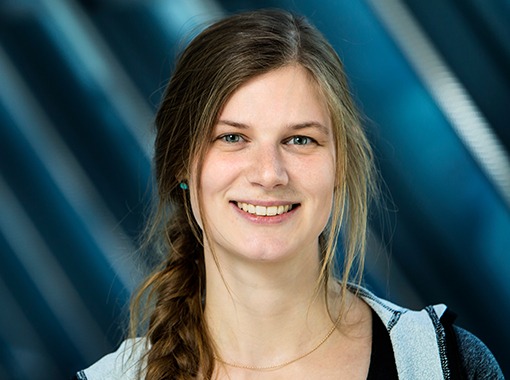Doctoral defence in Geology - Deirdre Elizabeth Clark

Aðalbygging
The Aula
Ph.D. student: Deirdre Elizabeth Clark
Dissertation title: Mineral storage of carbon in basaltic rocks at elevated temperatures. A field and experimental study.
Opponents:
Dr. Bjørn Jamtveit, Professor at the University of Oslo, Department of Geosciences
Dr. Gregory M. Dipple, Professor at the University of British Columbia, Department of Earth, Ocean and Atmospheric Sciences
Advisor: Dr. Sigurður Reynir Gíslason, Research Scientist at the Institute of Earth Sciences, University of Iceland
Doctoral committee: Dr. Eric H. Oelkers, Professor, University College London & Research Director, CNRS Toulouse France
Dr. Iwona M. Galeczka, Post doc at the Institute of Earth Sciences, University of Iceland
& Geochemist at Iceland Geosurvey (ISOR)
Dr. Domenik Wolff-Boenisch, Senior Lecturer, Curtin University, Australia
Chair of Ceremony: Dr. Magnús Tumi Guðmundsson, Professor and the Head of the Faculty of Earth Sciences at the University of Iceland
Abstract:
The reduction of carbon dioxide (CO2) emissions in the atmosphere is currently one of the main challenges facing humanity. One solution is carbon capture from concentrated sources and directly from the atmosphere, and long term storage in rocks. Basaltic rocks are rich in divalent cations, Ca2+, Mg2+ and Fe2+, which react with the dissolved CO2 to form stable carbonate minerals. Mineralization of water-dissolved CO2 injected into basaltic rocks at 20–50°C occurs within two years in field-scale settings.
In this study, a high-pressure column flow-through experiment was run to simulate CO2 injection into glassy basaltic rocks at 50°C. The aim of this experiment was to investigate the proportions of injected dissolved CO2 and high-pH groundwater needed to reach a “sweet spot” in the reacted fluid composition that favors the saturation of carbonates rather than zeolites and clays at pH 5.2–6.5 at 50°C, as all compete for divalent cations and pore space. Results highlighted the importance of initial pCO2 and pH values to obtain a balance between the formation of carbonates versus clays and zeolites. Moreover, modelling indicates that pauses in CO2 injection while still injecting water can result in enhanced large molar volume Ca-Na-zeolite and Mg-Fe-clay formation that consumes pore space within the rocks.
Parallel to the laboratory experiment, industrial-scale testing of a CO2-H2S gas mixture injection commenced in 2014 at the Hellisheiði geothermal power plant in Iceland. By the end of 2017, 23,200 metric tons of CO2 and 11,800 metric tons of hydrogen sulfide (H2S) had been injected to a depth of 750 m into fractured, hydrothermally altered basalts at >250°C. We collected over 80 water and gas samples from monitoring and injection wells, before and during injection. Major, minor, and trace element geochemical data were compiled to assess the magnitude of carbon and sulfur mineralization in the subsurface in relation to relevant primary and secondary minerals in the geothermal reservoir and to evaluate the potential scavenging and mobility of trace metals.
During the first phase of the CarbFix2 injection (June 2014 to July 2016), over 50% of injected carbon and 76% of sulfur mineralized within four to nine months. Four months after the doubling of gas injection rates in July 2016, the decrease in injected fluid pH led to increased mineralization during the second phase (July 2016 to December 2017), resulting in over 60% of the injected carbon and over 85% of the sulfur mineralizing. Doubling the gas injection rate brought the gas-charged fluids closer to the “sweet spot” of mineralization. The Ca release from the reservoir rocks to the fluid phase is a potential limiting factor for calcite (CaCO3) precipitation, although dolomite (Ca,Mg(CO3)2) and thus aqueous Mg may also play a role in the mineralization of the injected carbon. The mineralization rates are accelerated by the high temperatures (>250°C) of the formation rocks, but this is the upper temperature limit for carbon storage via the mineral carbonation of basalts due to decarbonation reactions. However, the injectivity of the injection well has remained stable throughout the study period confirming that the host rock permeability has been essentially unaffected by 3.5 years of mineral carbon and sulfur reactions.
Basalt rock dissolution is also known to release trace elements, having been extensively studied in Icelandic geothermal systems. Yet, little is known with regards to their mobility as a consequence of gas injection into basaltic rocks. The results here reveal the mobilization and uptake of several trace elements, particularly Ba, Sr, As, and Mo. Carbonates, sulfides, and secondary minerals such as epidote and actinolite likely incorporated these elements, among others. Notably, although these geothermal fluids are not meant for consumption, the trace elements were generally not above the drinking water standards set by the World Health Organization, the European Union, and Iceland, with the main exception of As. However, while As was significantly elevated before and during the first year of gas injection, concentrations have since been greatly reduced over time to levels at or below drinking water standards.
About the doctoral candidate:
Deirdre Elizabeth Clark was born on 8 April 1988. Her parents are Deanna Borchers and Paul Chudleigh Clark. She grew up in Calgary, AB, Canada and Scotch Plains, NJ, USA. In 2010 she obtained her BSc in geology and BA in environmental studies from the George Washington University in Washington, D.C., USA. She then completed an MSc degree in geochemistry and hydrology from Utrecht University in the Netherlands in 2013. She began her doctoral studies at the University of Iceland in 2014.
Deirdre Elizabeth Clark



